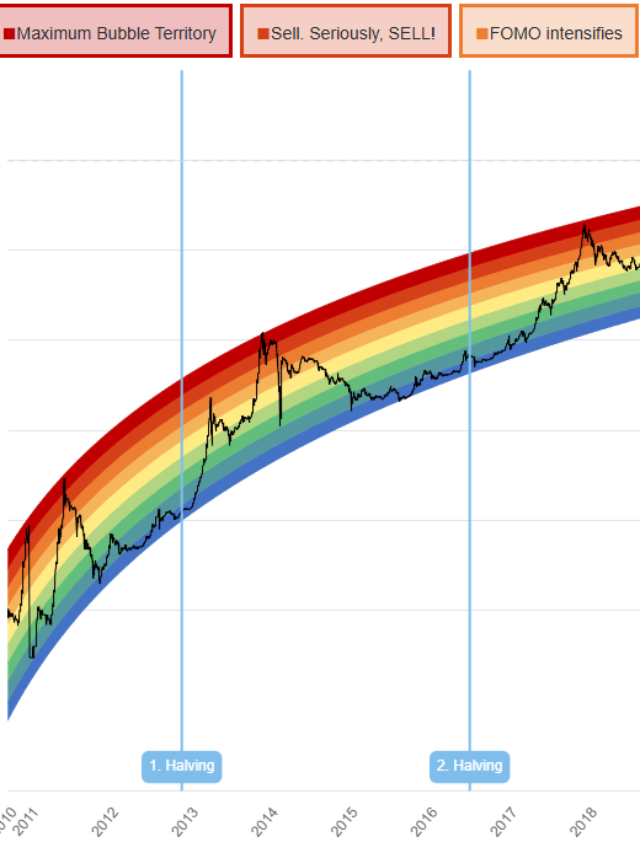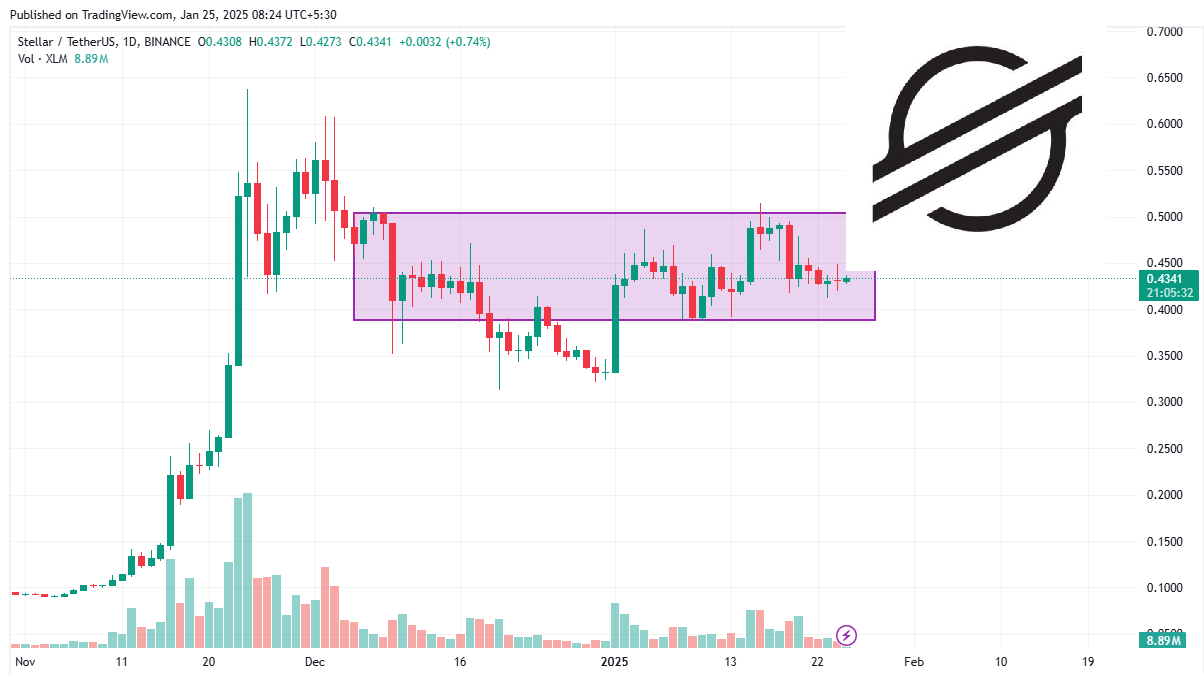Brief Overview of Stellar (XLM)
Stellar (XLM) is a blockchain platform that helps make quick and affordable cross-border payments and asset transfers. Founded in 2014 by Jed McCaleb and Joyce Kim, Stellar seeks to connect traditional banking systems with blockchain technology, providing a decentralized method for conducting global transactions. The platform uses its own currency, Lumens (XLM), to support transactions and ensure there’s enough liquidity in the network.
Purpose of the Blog: Understanding Price Predictions for 2025–2030
In this blog, we take a closer look at what might happen to Stellar’s price from 2025 to 2030. By examining past performance, new technologies, market changes, and expert opinions, we hope to give you a clear idea of where XLM could be heading in the future.
What is Stellar (XLM)?
The History and Evolution of Stellar
Stellar started in 2014 with the goal of providing financial services to people who don’t have access to traditional banking. Originally based on Ripple (XRP), Stellar sets itself apart by emphasizing decentralization and working together with banks and other financial groups. Its open-source system lets developers create decentralized apps that make use of its fast transaction model.
Key Features and Use Cases
- Fast and Low-Cost Transactions: Stellar processes thousands of transactions per second with minimal fees, making it ideal for micropayments and remittances.
- Cross-Border Payments: Stellar enables seamless international money transfers by connecting payment providers and banks.
- Asset Tokenization: Users can issue and trade digital representations of assets such as fiat currencies, commodities, or securities.
- Decentralized Exchange (DEX): Built-in DEX allows for trading assets directly on the Stellar network without intermediaries.
Stellar’s Role in the Blockchain Ecosystem
Stellar connects traditional banks with the world of cryptocurrencies. By teaming up with companies such as IBM and MoneyGram, it plays an important part in making financial access better for everyone. Additionally, its capability to turn assets into tokens creates new possibilities for innovative financial products like stablecoins and central bank digital currencies.
Factors Influencing Stellar’s Price
Market Sentiment and Trends in Cryptocurrency
The mood in the crypto market plays a big role in how XLM is priced. When the market is doing well, more investors tend to jump in, but when it’s struggling, prices usually fall. Things like Bitcoin halving or big companies starting to use cryptocurrency can really spark excitement across the market.
Technological Developments in Stellar
Upgrading protocols regularly, like improving scalability, adding security features, and boosting smart contract abilities, makes Stellar more competitive and attractive to both developers and businesses.
Partnerships and Integrations with Financial Institutions
Working together with important companies such as IBM and MoneyGram helps build trust and encourages more people to use XLM, which in turn affects its market value. Stellar’s partnerships with governments on CBDC pilot projects also demonstrate what it can achieve.
Regulatory Landscape and Its Impact on XLM
Changes in regulations are important for how cryptocurrencies are accepted and priced. When regulations support cryptocurrencies, growth can happen. On the other hand, strict rules might slow things down. Stellar is designed to adapt easily to these regulatory shifts.
Macro-Economic Factors
The state of the global economy, including things like inflation, currency drops, and the availability of money in the market, can influence how much people invest in cryptocurrencies like Stellar. Furthermore, as more emerging economies start using blockchain technology, it might give a big lift to these investments.
Price Performance of Stellar: Historical Overview
Initial Launch and Early Years
Stellar started its journey in 2014 and gradually caught on. People began to notice its fresh take on cross-border payments. Right from the beginning, the network aimed to promote financial inclusion and keep fees low, which drew in those who were eager to try something new.
Bull and Bear Cycles (Key Trends from 2015–2024)
- 2017 Bull Run: XLM reached an all-time high of $0.87 during the crypto market boom driven by initial coin offerings (ICOs).
- 2018 Bear Market: Prices plummeted as the market corrected, reflecting broader trends in the crypto space.
- 2020–2021 Rally: Renewed interest in blockchain technology and decentralized finance (DeFi) fueled significant price gains, with XLM peaking at $0.73 in 2021.
Major Milestones and Their Impact on Price
Important events, like teaming up with IBM and MoneyGram, along with improvements to the network like the Protocol 17 update, have often resulted in price increases. When governments started adopting CBDCs, it also raised trust in Stellar.
Stellar Price Prediction for 2025
Expert Predictions and Analysis
Some experts think that by 2025, XLM might hit between $0.50 and $1.00. This mainly depends on how the market behaves and how widely it gets adopted. Things like better network features and more institutions using XLM will really matter.
Technological Advancements Expected by 2025
Scalability improvements, smart contract integration, and enhanced user interfaces are expected to attract more developers and users to Stellar by 2025.
Adoption Trends and Their Potential Influence
Adoption by financial institutions, fintech startups, and governments will likely boost XLM’s demand. The integration of CBDCs and stablecoins on the Stellar network will further solidify its utility.
SWOT Analysis for Stellar in 2025
- Strengths: Fast transactions, strong partnerships, low transaction costs.
- Weaknesses: Stiff competition from projects like Ripple and Ethereum.
- Opportunities: Expanding use cases, DeFi integration, CBDC implementations.
- Threats: Regulatory uncertainties, technological competition.
Stellar Price Prediction for 2026
Expected Market Developments
2026 could witness broader crypto adoption, with XLM benefiting from its unique value proposition. The rise of tokenized assets and decentralized finance will likely play a significant role.
Influence of Competing Cryptocurrencies
Competition from Ripple, Solana, and emerging projects may affect Stellar’s market share. However, Stellar’s focus on partnerships and financial inclusion provides a niche advantage.
Long-Term Partnerships and Use Case Scenarios
Sustained partnerships and innovative use cases, such as cross-border payment solutions and CBDC pilots, will strengthen Stellar’s ecosystem.
Forecast Models for 2026 Price Analysis
Price forecasts for 2026 range between $0.70 and $1.20, reflecting steady growth driven by adoption and technological advancements.
Stellar Price Prediction for 2027–2030
Key Catalysts for Price Growth During This Period
- Increased adoption in emerging markets.
- Expansion of asset tokenization on the network.
- Ongoing collaborations with global entities.
Global Trends in Blockchain Adoption
The rise of decentralized finance (DeFi) and central bank digital currencies (CBDCs) will boost Stellar’s relevance. Its focus on low fees and scalability makes it a preferred choice for enterprises.
Long-Term Challenges and Potential Risks
Regulatory hurdles, competition, and technological vulnerabilities could pose challenges during this period.
Forecast for Each Year (2027, 2028, 2029, 2030)
| Year | Price Prediction ($) |
| 2027 | 0.90–1.50 |
| 2028 | 1.20–2.00 |
| 2029 | 1.50–2.50 |
| 2030 | 2.00–3.00 |
Technical Analysis of Stellar (XLM)
Chart Patterns and Key Indicators
Analysis of moving averages, RSI, and MACD suggests bullish potential for Stellar in the long term. Historical price trends indicate strong support around $0.30 and resistance at $1.00.
Support and Resistance Levels
Key support levels: $0.30, $0.50; Resistance levels: $1.00, $1.50. Breaking these levels could signal significant upward or downward trends.
Long-Term Price Trend Predictions
Sustained adoption and technological growth will likely result in upward price trends, with potential corrections driven by market sentiment.
Unveiling the Secrets of Crypto Whales: What Their Movements Mean for the Market
Fundamental Analysis
Assessment of Stellar’s Ecosystem and Innovations
Stellar’s continued focus on financial inclusion and network upgrades strengthens its position as a leading blockchain project.
Tokenomics of XLM and Its Role in Sustaining Value
The capped supply of XLM ensures scarcity, supporting long-term value. Its utility in transaction fees and liquidity provisioning enhances its fundamental value.
Competitive Advantage Against Other Blockchain Projects
Stellar’s speed, low fees, and partnerships give it a competitive edge over rivals like Ripple and Ethereum, particularly in the financial sector.
Expert Opinions and Third-Party Forecasts
Insights from Crypto Analysts
Analysts highlight Stellar’s potential to reach $3.00 by 2030, driven by strategic partnerships, technological advancements, and increased adoption.
Reports from Investment Firms and Market Researchers
Research firms forecast steady growth for XLM, emphasizing its utility in global financial systems and its compliance-friendly architecture.
Risks and Challenges
Potential Regulatory Crackdowns
Strict regulations could limit adoption and impact price. However, Stellar’s collaboration with regulators positions it better than many competitors.
Market Volatility and Investor Sentiment
Cryptocurrency’s inherent volatility remains a significant risk, impacting short-term price predictions.
Technological Risks and Security Concerns
Network vulnerabilities, if exploited, could undermine trust and adoption, negatively affecting XLM’s value.
Why Invest in Stellar?
Benefits of Adding XLM to Your Portfolio
- Diversification in the crypto market.
- Exposure to a project with real-world use cases and strong partnerships.
Comparing Stellar with Other Cryptocurrencies for Long-Term Investment
Stellar’s focus on financial inclusion, low-cost transactions, and partnerships with major financial institutions make it a unique investment in the blockchain space.
Conclusion
Recap of Predictions and Key Insights
Stellar has solid foundations, key partnerships, and practical uses that set the stage for great growth. Predictions for its price show a consistent rise, backed by increased usage and new ideas.
Final Thoughts on the Future of Stellar (XLM)
While challenges remain, Stellar’s focus on innovation and collaboration ensures a promising future. Its unique approach to solving financial inclusion makes it a standout project in the blockchain ecosystem.
FAQs
Is Stellar a Good Investment for the Long Term?
Yes, Stellar’s strong use cases and partnerships make it a viable long-term investment.
What Makes Stellar Different from Other Cryptocurrencies?
Stellar’s focus on financial inclusion and low-cost cross-border transactions sets it apart from competitors like Ripple and Ethereum.
Can Stellar Reach $10 or More by 2030?
While ambitious, such a target is possible with mass adoption, increased utility, and favorable market conditions.
References
- Reports from CoinMarketCap and CoinGecko
- Analysis by leading crypto experts
- Research from blockchain and financial institutions







One thought on “Stellar’s Future: 2025-2030 Price Predictions and Market Analysis”